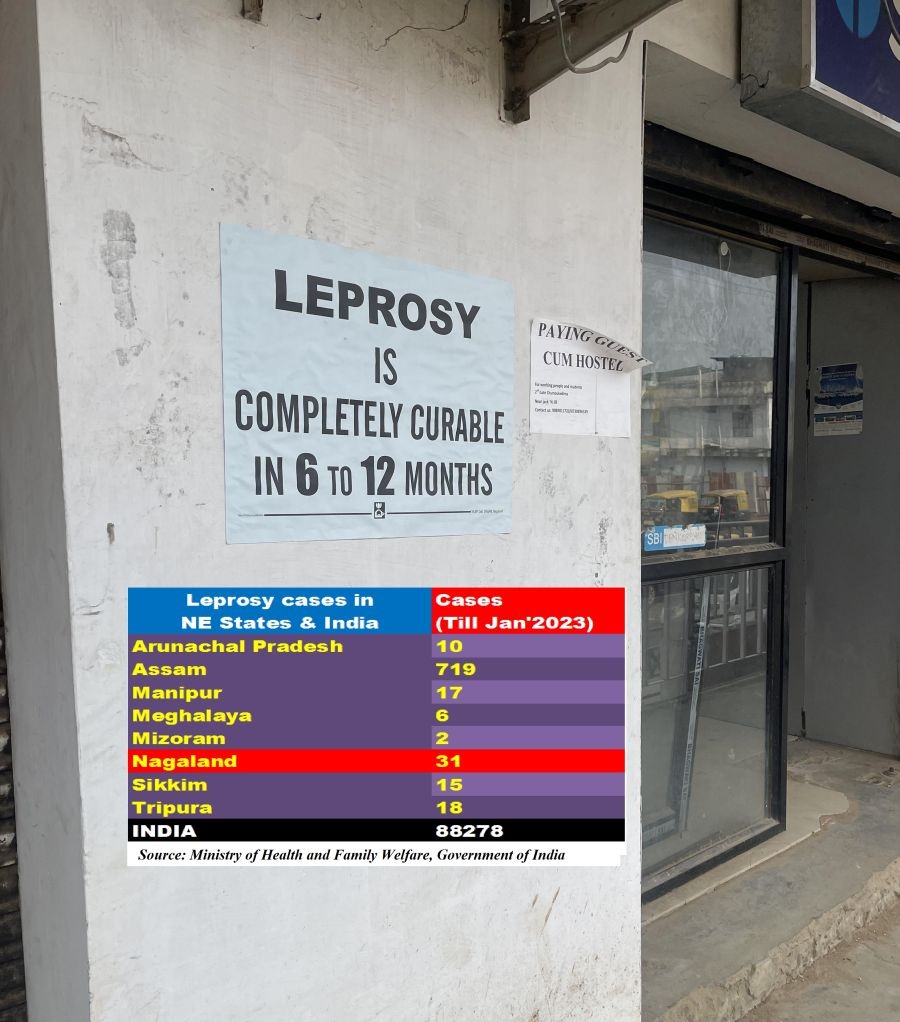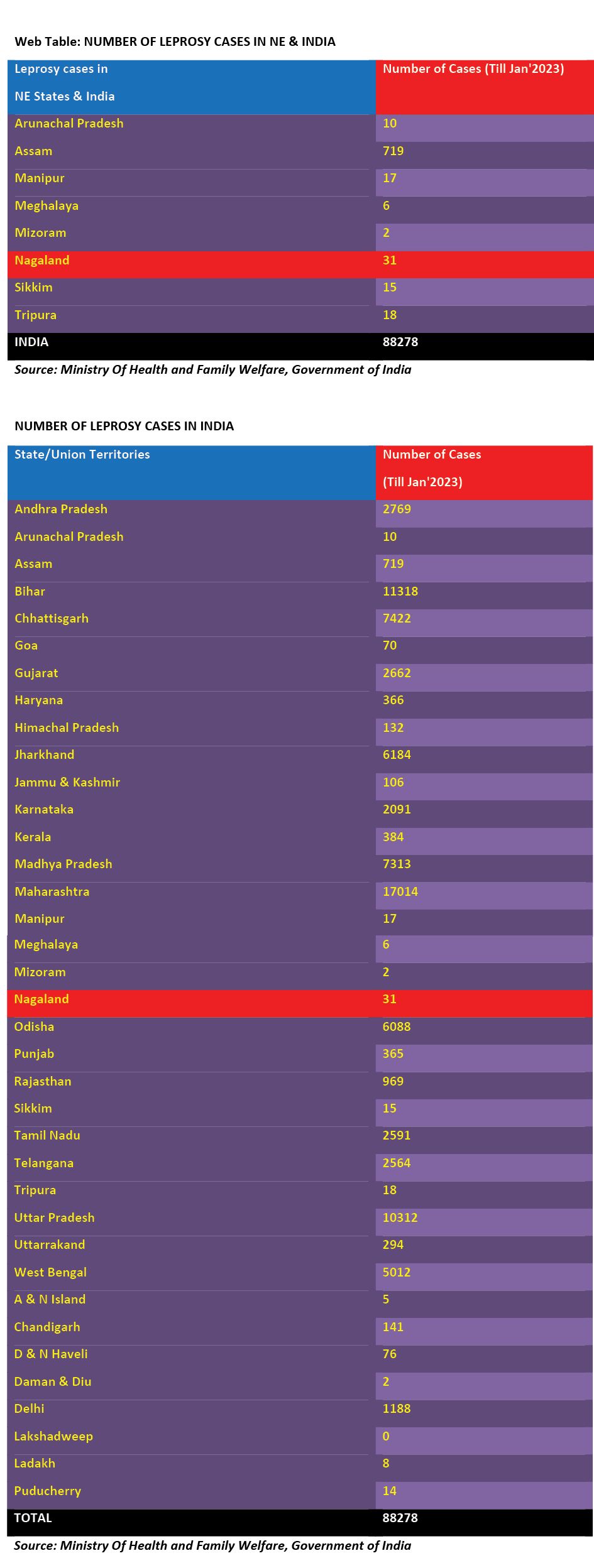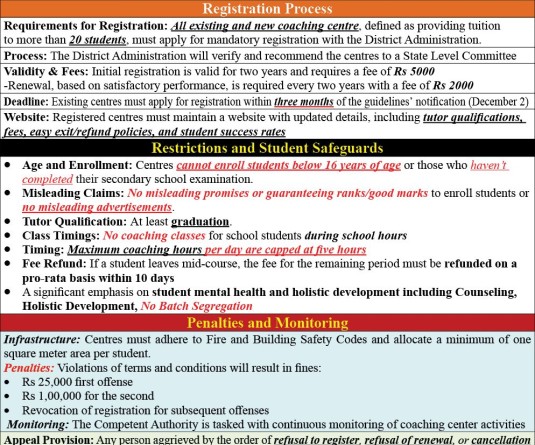A campaign poster on leprosy pasted outside an ATM near 5th Mile along the National Highway-29 on March 28 informs that the disease is “completely curable’ in 6-12 months. As of January 2023, Nagaland had 31 active cases of leprosy. (Inset) Leprosy cases in NE States & India. (Morung Photo)

• Cases rise by over 15% across India in 2021-22
• ‘Completely curable,’ declares health department
Morung Express News
Dimapur | March 28
Nagaland has the second highest active leprosy cases in the North-East after Assam as of January 2023, while India saw a 15.07% rise in leprosy cases in 2021-22, according to data presented by the Union Government in the Lok Sabha.
As per the data provided by the Union Minister of Health and Family Welfare, Dr Mansukh Mandaviya in reply to queries related to leprosy on March 24, there were 31 active leprosy cases in Nagaland as of January 2023, while the status across India was 88,278.
At 719 cases, Assam had the highest number of cases in the NE, while Maharashtra, Bihar and Uttar Pradesh topped the national tally at 17,014, 11,318, and 10,312 cases respectively.
There were nil cases in Lakshadweep, while Daman & Diu and Mizoram had two each.
The cases for other NE States were Tripura (18), Manipur (17), Sikkim (15), Arunachal Pradesh (10); and Meghalaya (6).
Meanwhile, the Minister’s reply further informed that after falling by 43% in 2020-21, the number of leprosy cases reported in India increased by about 15.07% to 75,394 in 2021-22 from 65,147.
With the 88,278 as the latest status, the number of cases seems to have increased further.
However, Dr Mandaviya underscored that India has achieved elimination of leprosy as a public health problem as per WHO criteria of less than 1 case per 10,000 population at the National level in 2005.
Incidentally, as per the Nagaland’s Department of Health and Family Welfare (DoHFW), the State was first to achieve the elimination target set by the Government of India & World Health Organization (WHO) by bringing down the Prevalence rate (PR) to below 1/10000 population in 1998.
The State is still maintaining overall achieved target i.e. 0.05 per 10,000 population, informed its Annual Administrative Report 2021-22.
In its previous 2019-20 report, the DoHFW informed that Dimapur has the highest cases of 24, followed by 2 in Kohima and 2 in Tuensang for a total of 28. Thereafter the number as increased as the current status is 31 as of January 2023.
Various interventions
Meanwhile, Union Health Minister maintained that various interventions introduced under National Leprosy Eradication Programme (NLEP) in the last few years, number of new leprosy cases detected have come down to 75,394 in 2021-22 from 1,25,785 in 2014-15.
The PR at national level has decreased to 0.45 per 10,000 population in 2021-22 as compared to 0.69 per 10,000 population in 2014-15, he added.
The Minister further informed that the Government of India has launched National Strategic Plan (NSP) & Roadmap for Leprosy (2023-27) on January 30 2023, to achieve zero transmission of leprosy by 2027 i.e. three years before the Sustainable Development Goal (SDG) 3.3.
The NSP contains implementation strategies, targets, public health approaches and overall technical guidance for the programme.
The strategy and roadmap are focused on awareness for zero stigma & discrimination, promotion of early case detection, prevention of disease transmission by prophylaxis (Leprosy Post Exposure Prophylaxis) and roll out of web-based information portal (Nikusth 2.0) for reporting of leprosy cases, he added.
As per recent case detection campaign banner by Nagaland DoHFW, leprosy is “completely curable’ in 6-12 months. It can be cured at any stage but early detection and early treatment are crucial to prevent “deformity.”






